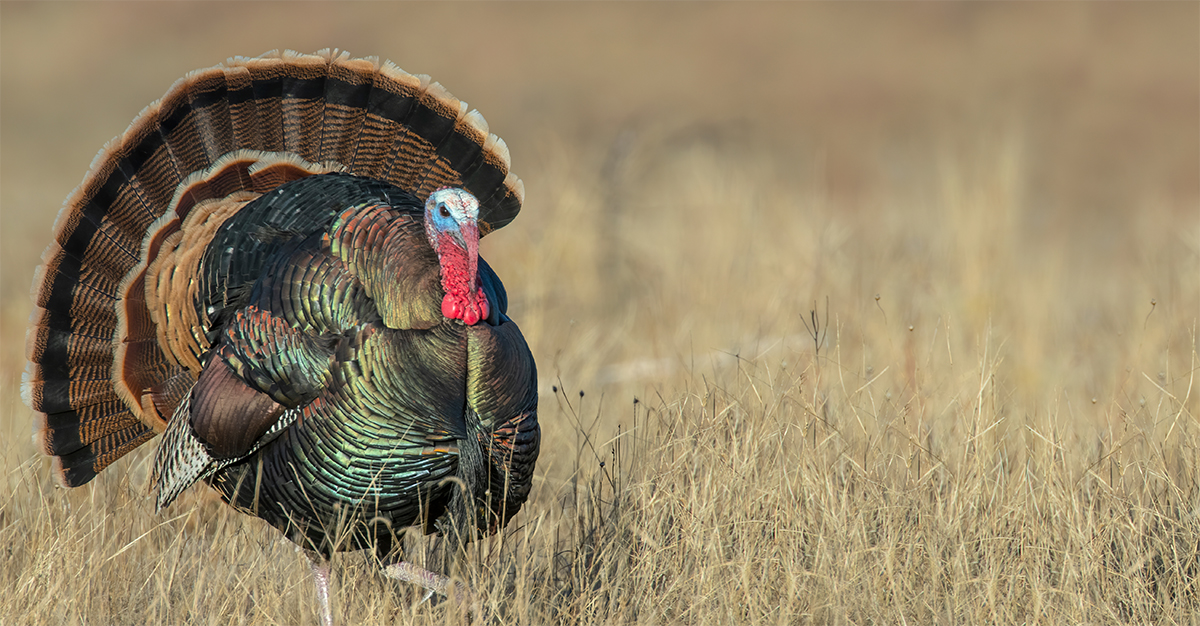
By Paula Musto
Newcomers to our region are often surprised to see Wild Turkeys meandering through an open field, foraging along roadsides or just casually hanging out in backyards. Tied to the all-American holiday Thanksgiving, turkeys are commonly thought to be pretty much alike: big, not too intelligent birds akin to the chickens we serve up on the dinner table.
Native to America, Wild Turkeys were abundant, numbering in the millions, when the first European settlers arrived. Every schoolchild knows the story of the first Thanksgiving. But by the early 1900s turkey populations throughout the country had been nearly eliminated due to unregulated hunting and habitat destruction.
Starting in the late 1920s, there were attempts to restore the valuable game birds by releasing pen-raised turkeys into the wild, hoping they would breed. These efforts failed miserably, says Hannah Plumpton, a game biologist with the North Carolina Wildlife Commission. The domesticated turkeys were incapable of surviving the harsher life in the wild.
In the 1950s, the commission took a different tack and began live-trapping Wild Turkeys from existing populations and relocating the birds to other habitats. The transplantations were successful and continued through the 1990s. With stringent, spring-only hunting regulations in place, Wild Turkeys are now plentiful throughout the state. “The Wild Turkey restoration is considered one of America’s greatest conservation success stories,” Plumpton says. “Once again, Wild Turkeys are a common species on our landscape.”
The dramatic comeback is applauded by wildlife enthusiasts. “Wild Turkeys are magnificent birds,” says John Koon, president of the Blue Ridge Chapter of the National Audubon Society. “I can understand why Benjamin Franklin advocated for turkeys to be the national bird.”
When the Bald Eagle was selected as the emblem of the US in 1782, the Founding Father was not pleased. The eagle, according to Franklin, was of bad moral character, a bird who steals food from others. He thought the turkey was more respectable and a better symbol of strength, honesty and independence for the new nation. Not all share this high regard for the species, however.
“I’m not sure why they have a reputation for being dumb,” Koon says. “Maybe it’s because a turkey can just sit there and stare at you. But actually, they are pretty intelligent. Ask any hunter.” The birds can detect a predator long before the predator sees them, according to Koon, making Wild Turkeys the hardest game birds to outsmart.
They rely on superior vision and hearing to escape danger. They are known to be extremely cautious, always looking out for trouble, a trait that serves them well during hunting season. Yet, the species’ propensity for staring at the sky for prolonged moments, even in pouring rain, has contributed to their dim reputation.
Wild Turkeys have an elaborate mating ritual that involves impressive displays of feathers, sounds and pecking order. Males, called toms or gobblers, make exuberant screeching sounds to attract females and intimidate other males. The toms puff themselves into feathery balls and proudly strut about during mating season showing off their size, strength and plumage.
“They are very funny to watch,” Koon says. “In full splendor, they signal to females—hey, look at me—and mate multiple times with several hens.”
Wild and domestic turkeys are the same species, but centuries of selective breeding have resulted in very different birds. The wild ones are lean and muscular, while farm-raised birds are significantly larger and are bred for their meat yield. The domestics can barely fly due to their girth and weaker muscles. They are also more docile and lack the wariness of the wild variety. Domestics have a duller plumage compared to Wild Turkeys which sport glossy feathers often tinged with a metallic sheen. And, while Wild Turkeys are omnivorous—eating insects, acorns, seeds and berries—the domestics eat formulated grain diets, relying on humans for food.
The species’ common name, turkey, relates to geography and old Middle Eastern trade routes. When explorers introduced the birds to Europeans in the 16th century, they were considered similar to Guinea Fowl from Africa, a familiar item on royal tables thanks to trade routes controlled by the Ottoman Turks. Guinea fowl was referred to then as turkey fowl and the name stuck to the birds brought over from America, even though the two species are not closely related.
Today, Wild Turkeys live in every state in the US except Alaska. To view these creatures in their natural habitat, it’s best to be on the outlook early morning and late afternoon when flocks are most active. In Asheville, they are often seen on the grounds at the Biltmore.
Paula Musto is a writer and volunteer for Appalachian Wildlife Refuge which cares for injured and orphaned wildlife. Visit AppalachianWild.com to learn more or donate.






